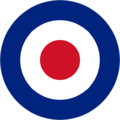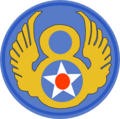Bombing of Wilhelmshaven in World War II facts for kids
The Wilhelmshaven World War II bombings were a series of air attacks by the Allies of World War II on the German city of Wilhelmshaven. This city was an important naval base during World War II. From spring to November 1943, people who were forced to work, known as "slave labourers" from the Neuengamme concentration camp, were brought to Wilhelmshaven. Their difficult task was to clear up the damage after the air raids.
Contents
Early Air Raids on Wilhelmshaven
The first air attacks on Wilhelmshaven happened very early in World War II. These raids aimed to hit German naval ships and important military targets.
First RAF Bomber Command Raid
On 4 September 1939, just after the war began, the RAF Bomber Command carried out its first raid of World War II. Ten Bristol Blenheim planes from two squadrons attacked German ships. They flew at a low height. Seven of these planes were lost. The attack did not cause much damage to the German fleet.
The Battle of the Heligoland Bight
On 18 December 1939, a major air battle took place. It was called the Battle of the Heligoland Bight. German radar, an "experimental Freya radar" system, helped them detect the British bombers. These bombers were flying towards Wilhelmshaven without fighter planes to protect them. As the planes got closer, they were told not to bomb ships in the harbour. This was to avoid hurting civilians. German fighter planes then attacked the British bombers as they flew home. They destroyed 12 out of 22 Vickers Wellington planes.
First Daylight Attack by Fortresses
On 8 July 1941, No. 90 Squadron RAF bombed Wilhelmshaven. This was the first time Fortress I planes attacked in daylight. Three bombers each carried two tons of bombs. They flew so high that German fighter planes could not reach them. However, only one of the bombers managed to drop its bombs on the target.
Major Bombing Campaigns
As the war continued, the Allied air forces launched larger and more frequent bombing missions. They used new technologies and more planes.
First US Daylight Mission
On 27 January 1943, the VIII Bomber Command of the Eighth Air Force flew its first daylight bombing mission against Germany. This mission, number 31, targeted Wilhelmshaven. Fifty-five bombers dropped 137 tons of bombs on warehouses and factories. Three of the American planes were shot down.
Radar-Guided Bombing Success
From 11 to 12 February 1943, RAF Bomber Command sent 220 planes to attack Wilhelmshaven. The main targets were the important naval bases of the Kriegsmarine (German navy). The naval arsenal at Mariensel exploded. This explosion destroyed a large area of about 50 hectares (120 acres). This raid was important because it was the first successful use of "blind-bombing." This meant using radar, specifically the H2S system, to find targets. Only three planes were lost during this successful mission.
Filming a Documentary
On 26 February 1943, the Eighth Air Force carried out its second bombing mission on Wilhelmshaven. During this raid, footage was filmed for a famous documentary film. The film was called Memphis Belle: A Story of a Flying Fortress. The footage was shot from a B-17 Flying Fortress plane named Jersey Bounce.
Attacks on U-boat Yards
On 22 March 1943, six groups of B-17s and B-24 Liberators attacked U-boat yards in Wilhelmshaven. These yards were where German submarines were built and repaired.
Challenges and Losses
Later missions faced strong German resistance. On 21 May 1943, German fighter planes attacked 77 B-17s. Ten percent of the bomber force was lost. This showed how dangerous these missions could be.
On 11 June 1943, 252 B-17s were sent to attack the U-boat yard at Wilhelmshaven. Eight of the 218 planes that reached the target were lost. This raid showed how difficult it was to bomb accurately when enemy fighters attacked. It was especially hard when the bombers were too far for their own fighter escorts to protect them.
Later Bombing Raids
Bombing raids continued through 1943 and into 1944 and 1945. Sometimes, Wilhelmshaven was bombed as a "target of opportunity." This meant planes would bomb it if their original target was unreachable due to bad weather or other reasons.
Major Attack in 1944
On 3 February 1944, 609 B-17s carried out a major attack on the port area of Wilhelmshaven. This was one of the largest raids on the city.
Final Missions
On 30 March 1945, the 2d Air Division of the Eighth Air Force completed its final mission against Wilhelmshaven. This was Mission 918. In total, the Eighth Air Force carried out 12 attacks on Wilhelmshaven. They dropped over 5,300 tons of bombs. Forty-six of their bombers were shot down during these missions.
Images for kids



